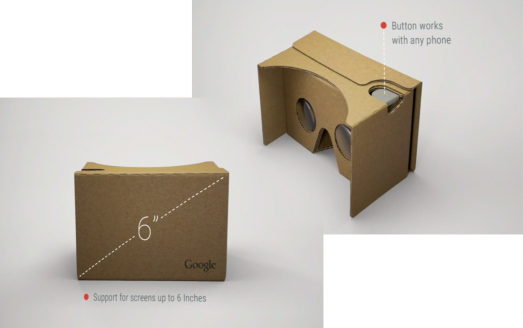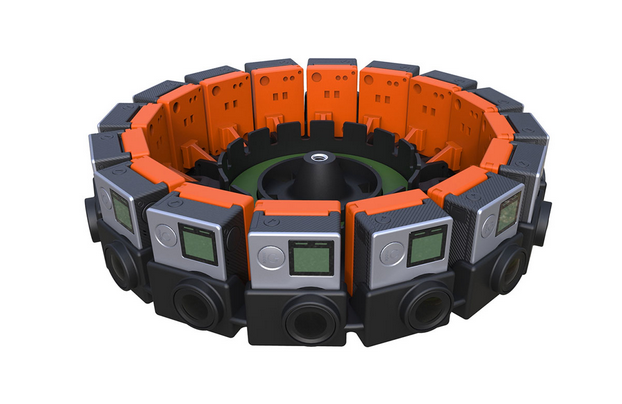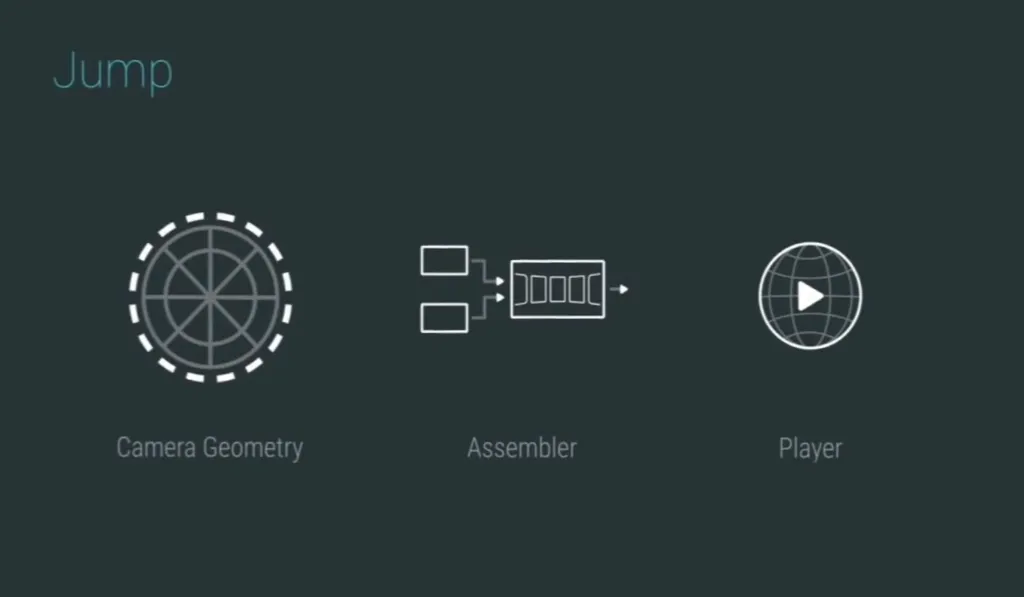The big news out of Google IO came from the most modest place, today: Google Cardboard. The company announced three specific projects that taken together are pretty earth-shaking for the industry.
The first is the tiniest: little overhauls to the Cardboard headset itself. I’ve been pretty critical of the Cardboard headset in the past, since I feel it represents VR poorly to the uninitiated. The new version can hold larger phones, has a better button (no more magnet), and assembles more easily. Hopefully the modest upgrades will help, since Cardboard is how most people are initiated into VR, but this is really incremental. More important is the announcement that the Cardboard SDK for Unity will support both iOS and Android, so developers can target most phones with a single platform. Cool.

Google’s bigger project is on the capture side, though: in partnership with GoPro, they announced ‘Jump,’ which is this crazy contraption:

This doesn’t sound revolutionary at first — how many companies are gluing GoPros together for VR, anyway? — but what happens after you stick the cameras together is pretty huge. Basically, Google uses machine vision techniques to extract a stereo view from the mono footage, and they’re going to release software to let you do this too. That’s a big deal, since stereo VR is way, way better than mono. (We’ll take a deeper dive into the tech tomorrow, stay tuned.) And GoPro will be selling these rigs soon, too.
So the live-action-VR-content bar has been raised: if any idiot with about $10k (16 cameras x $500 apiece, plus the Jump itself and rounding) can go out and produce pretty decent 3D stereo 360 content — well, you have to be a lot more special than you did just a few days ago. Between the rig itself, software, and content production, about a hundred fledgling business just withered with that one announcement. (But hey, viewers of VR rejoice!)
Google also threw in a feel-good project, something about loaning VR headsets to schools to let school children travel and learn or some such nonsense. I guess they didn’t want anyone to start an educational VR startup, either. (Just kidding, it’s great for the kids. Google is all about the kids.)
The other half of the content equation is obviously distribution. And oh boy, did they ever blow up the landscape on that one, even if it’s an obvious move: YouTube will support true VR, like 360 degree 3D stereo VR. And of course, that software they’re releasing will plug right into YouTube for your convenience. Keep in mind, these are absolutely gob-smackingly-large files; 16 GoPros shooting at 4k (because why would you shoot anything else?) at max bitrate will produce about 430 gigabytes per hour. (Math in the next article, but I swear I checked it twice.)
So, Google will let you process that enormous pile of pixels into something semi-manageable, then upload it to their YouTube pipeline. As obvious as this move was, the fact that Google is making it now really matters. For one, it says Google cares about VR. Cardboard felt like it could’ve been a fabled 20% type project, in that weird, quirky, goofy way that Google does. Whether or not it started that way, it’s clearly a major part of the VR landscape, and Google is taking it seriously. And YouTube itself brings a ton of brand power, but more than that it brings an audience. If YouTube VR is available on any smartphone using a Cardboard headset, you’ve suddenly got hundreds of millions of potential VR consumers — no console, top-shelf gaming PC or new Android phone necessary. And all of it in a closed loop, Google ecosystem.
So yeah, that’s a pretty big announcement for one day. It’s weird to say this, after their huge acquisition of Oculus, but is it possible Facebook is suddenly trailing Google in the VR platform wars? How many people will have watched VR on YouTube by the time the CV1 launches?






























